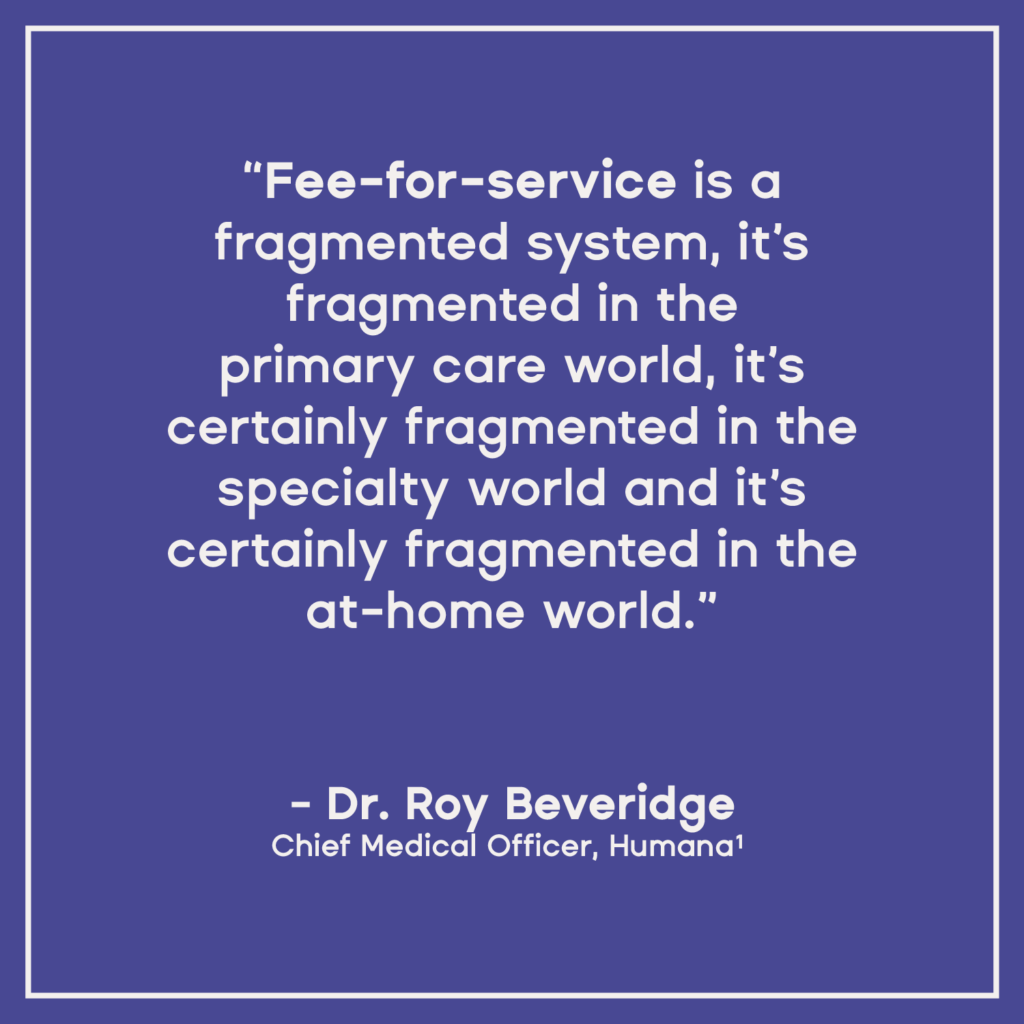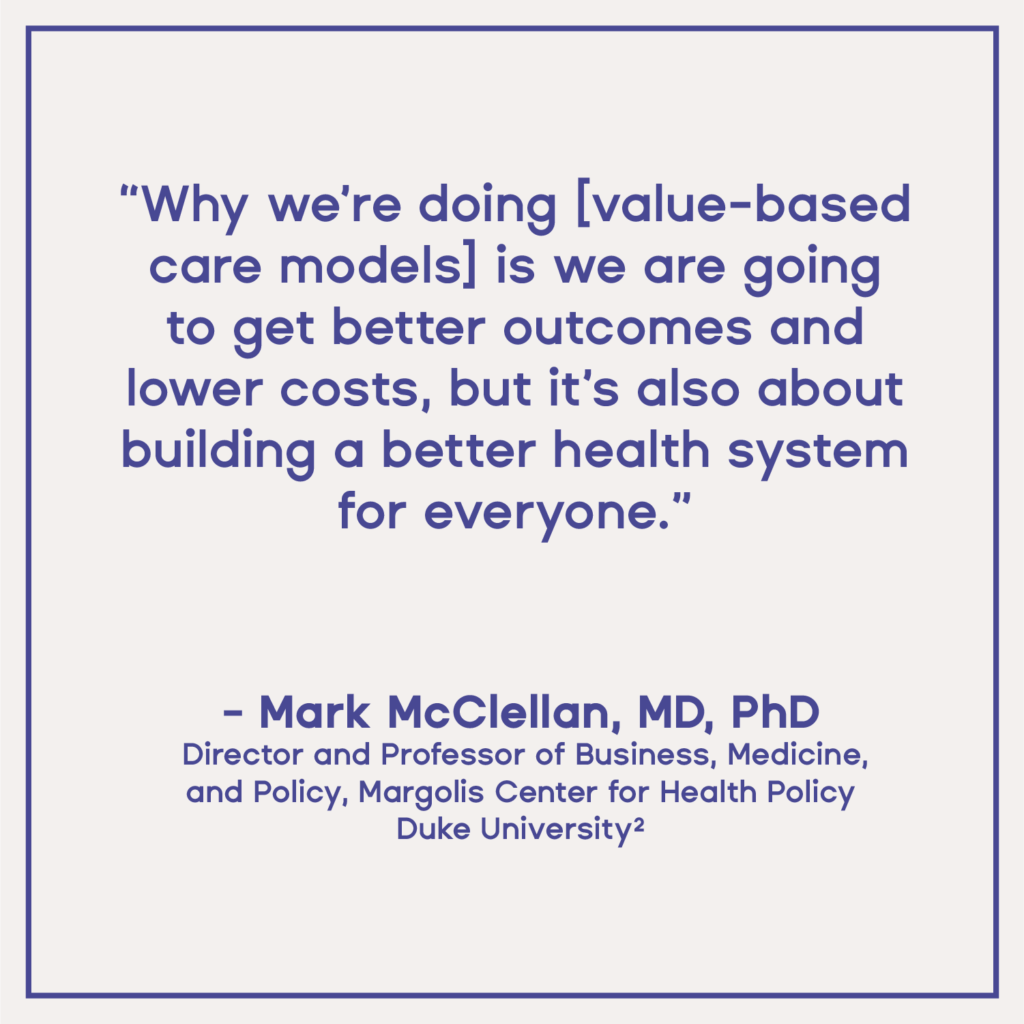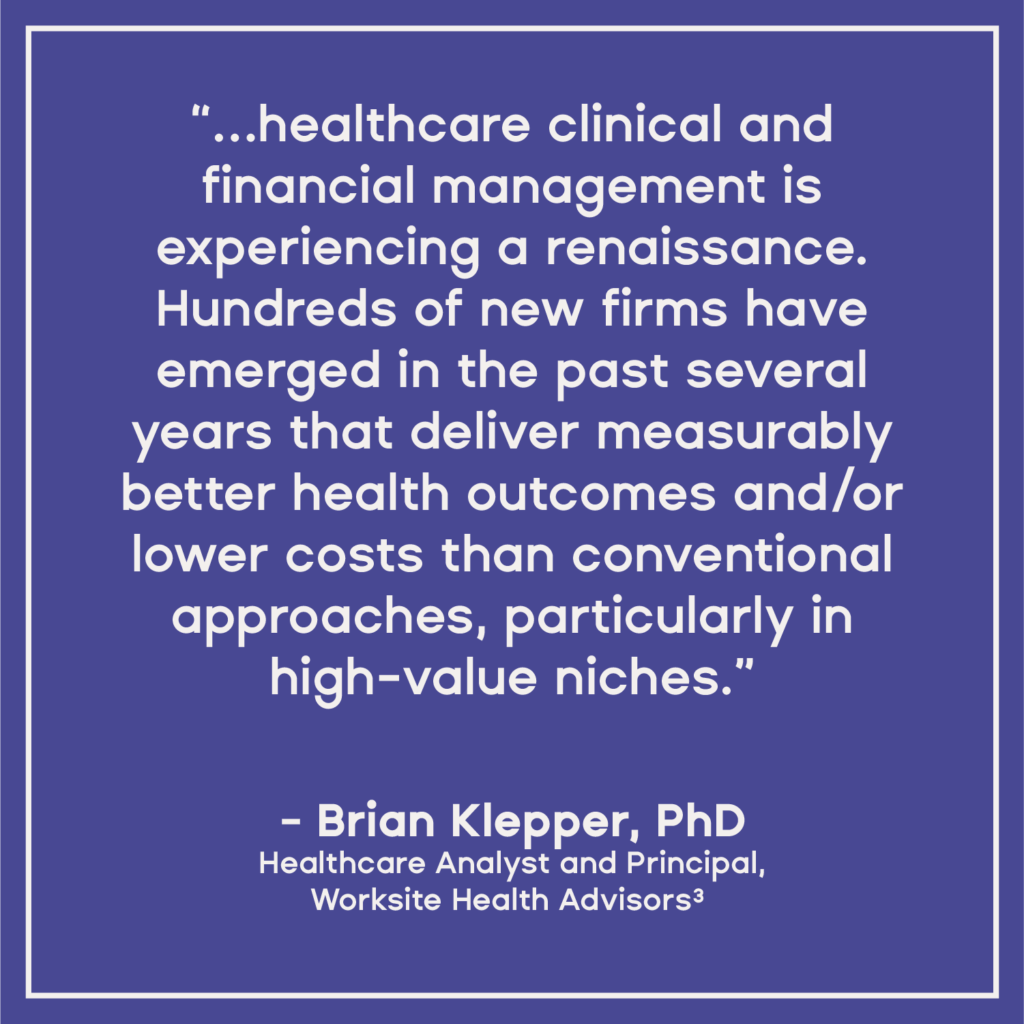The Value-Based Healthcare Model Is the Future
Fee-for-service billing has been the dominant financial structure throughout the history of modern US healthcare. This payment structure rewards physicians (through revenue) for the number and cost of individual services they provide in the course of caring for their patients. The more (and more expensive) services rendered, the higher the reimbursement. This model doesn’t encourage providers to use healthcare resources efficiently; since more billable services equate to higher revenues, it creates a perverse incentive. This is a primary driver for increasing healthcare costs in the last half-century.
In an effort to contain cost growth, government and private healthcare payers have tested different value-based healthcare models. These systems promote a healthcare delivery framework that reimburses providers based on outcomes rather than services rendered. Moreover, value-based healthcare models hold providers accountable for the resources used. By placing a limit on reimbursements, these models tie the expenditures providers incur in the course of providing care to their bottom line. Therefore, value is created by lowering costs and by delivering high quality results. And better provider care improves patient outcomes.
Evolution of Value-Based Healthcare Services
In the 1980s, the Centers for Medicare and Medicaid Services (CMS) first began experimenting with ways to blunt the incentive structure embedded in fee-for-service by introducing Diagnostic Related Groups (DRGs). DRGs are a bundling mechanism that embeds a number of discrete services into a single billable unit for a common procedure (e.g., in the case of a surgery: the billable time for the surgeon and her team, the materials associated with providing that surgery, the accompanying recovery hospital stay, etc.) and sets a price for that service as a whole. As DRGs assume certain best-practices in the bundling of these services, they impact the care protocol by rewarding adherence to those practices.
For instance, DRGs essentially place a limit on the number of hospital days permitted for a specific surgery or condition. CMS hoped this would reduce hospital costs but, while the model was moderately successful on this front, it also encouraged a shift away from inpatient care to an outpatient setting. Overall, DRGs were thus largely ineffective in reducing healthcare costs.
While much of the 1990s saw HMOs and other healthcare delivery frameworks emerge in an effort to contain costs through benefit design and the introduction of gatekeepers (i.e., referral requirements), the Centers for Medicare and Medicaid Service Innovation Center (CMMI) began introducing value-based care models in 2012 as part of a mandate embedded in the Affordable Care Act (ACA). Early value-based healthcare models included programs that encouraged higher-value care for the purchasing of end-stage renal disease materials. Others created penalties for early hospital readmissions or medical complications occurring during hospitalizations. But the most significant changes have occurred in the last five years, as CMMI has become increasingly committed to value-focused healthcare service delivery frameworks.
Types of Value-Based Care Models
Today, there are a variety of healthcare delivery frameworks that can be considered value-based healthcare programs. Each of these have produced successes and failures in the nation’s movement toward higher-quality, lower-cost healthcare. Learning which aspects worked, and which did not, will therefore be critical in ongoing efforts to control healthcare spend while improving outcomes. The following are among the value-based healthcare models currently utilized.
- Accountable Care Organizations (ACOs) – ACOs are groups of providers that work together to efficiently and effectively care for a population of patients. Through collaboration and interaction, this model incentivizes providers to avoid excess utilization and redundancies via financial rewards for generating savings. By rewarding provider efficiency and care quality, providers can achieve comparable economics without over-utilization.
- Bundled Payment Programs – Like DRGs, this model is focused on a single episode of care, like a hip replacement or asthma exacerbation. Historical data allows payers and providers to align on a fair reimbursement price for the episode and the types of services that need to be included in the bundle. Providers are thereby incentivized to optimize outcomes and minimize complications, reduce care times, lower care costs, and improve patient experiences.
- Patient-Centered Medical Homes – This value-based healthcare model resembles HMO-capitation models. A patient’s primary care physician is the central figure in coordinating care for a patient, collaborating with a team of providers to meet a patient’s needs in a coordinated fashion. The goal is to provide comprehensive holistic care in an efficient, cost-effective manner. Like the other value-based healthcare models, incentives are in place to encourage the pursuit of these goals.
Direct Contracting & the Transition to ACO Reach
Among the latest value-based care models is CMMI’s Direct Contracting model. Direct Contracting is a healthcare delivery framework that promotes greater risk-sharing among providers and CMS, while capitating provider’s expenditures so that they are free to engage patients without as much consideration for individual billable units. Providers can choose to assume more or less risk by picking the appropriate model track. If they provide high-value care, they share in healthcare savings. But if expenditures exceed actuarially-calculated benchmarks, providers must reimburse Medicare for the additional costs incurred.
Direct Contracting went live on April 1st, 2021, with 53 Direct Contracting Entities (DCEs) participating. As one of the newest value-based care models, Direct Contracting advances the concept of physician risk-sharing and will likely foster innovative care delivery and cost management measures by providers. Based on the demand for enrolment in Direct Contracting, it appears providers realize the potential and inevitability of these models.
Of note, 99 DCEs were participating in the model as of January 2022. CMMI recently announced that it would be replacing direct contracting with the new ACO REACH (Realizing Equity, Access, and Community Health) Model, which is very similar in terms of the financial tools and support structures it makes available to providers, but has a greater focus on ensuring that underserved beneficiaries are represented.
The Future of Healthcare Delivery
By aligning incentives with the delivery of efficient, high quality healthcare, value-based healthcare models incentivize stakeholders to work together to create efficiencies and improve outcomes. In turn, this means increased efficiency, improved resource utilization, lowered costs and–most importantly–improved patient satisfaction.
1 Flynn, M. (2017). Humana’s Value-Based Efforts Show Home Health Opportunity. Home Healthcare News. Retrieved from https://homehealthcarenews.com/2017/11/humanas-value-based-efforts-show-home-health-opportunity/
2 Shryock, T. (2021). Reforms needed to make value-based care more widespread. Medical Economics. Retrieved from https://www.medicaleconomics.com/view/reforms-needed-to-make-value-based-care-more-widespread
3 Klepper, B., and Hogan, J. (2021). Op-Ed: Make Patient Care About Value, Not Volume. Medpage Today. Retrieved from https://www.medpagetoday.com/publichealthpolicy/healthpolicy/92490





